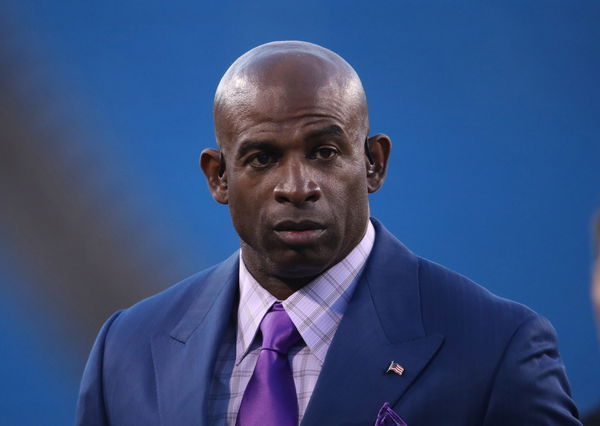
via Getty
Former player Deion Sanders before the start of the Buffalo Bills NFL game against the New York Jets at New Era Field on September 15, 2016 in Orchard Park, New York. (Photo by Tom Szczerbowski/Getty Images)

via Getty
Former player Deion Sanders before the start of the Buffalo Bills NFL game against the New York Jets at New Era Field on September 15, 2016 in Orchard Park, New York. (Photo by Tom Szczerbowski/Getty Images)
Last Thursday, the NCAA and the Power 5 athletic conferences (Atlantic Coast Conference, SEC, Pac-12, Big Ten, and Big 12) came to a groundbreaking settlement, heralding the end of the college sports amateurism model. This landmark decision now paves the way for student-athletes to receive payment from their schools, thanks to the budget provided by the NCAA. Part of a class-action lawsuit called House v. NCAA, this transformative settlement is currently awaiting the approval of a federal judge, a process that may take several months.
The settlement, while a significant step forward, does come with its share of complexities. It is divided into two parts. The first part involves a substantial compensation of $2.75 billion for athletes who were active before the NIL opportunity was introduced in July 2021. The second part introduces a revenue-sharing standard, allowing schools to distribute $20 million among their athletes. However, this raises the pressing question of potential disparity in payments.
ADVERTISEMENT
Article continues below this ad
Coach Prime envisions a likely problem with the NCAA’s settlement
Long before, when Coach Prime was the head coach at Jackson State, he had voiced his concerns about paying college athletes. A throwback video on Instagram showed Deion Sanders taking an example of picking a receiver and paying him $1,000,000. He said, “So first of all, he’s making more than my coaching staff. Now that has alienated not only the coaches, but it alienated some of the players. You got this big-time corner that’s not making that. This goads at him every day in practice and takes his heart! How do you think that’s gonna disrupt my team?”
View this post on Instagram
ADVERTISEMENT
Article continues below this ad
What Coach Prime said isn’t untrue. If players are divided by unequal pay, it can impact their overall performance and zeal to compete. The NCAA and Power 5 settlement has agreed to pay college students directly, with each school set to receive $20 million. Now, the bigger questions that look ahead are: Is every athlete going to be paid? How much are they going to be paid? Will there be equal gender pay?
ADVERTISEMENT
Article continues below this ad
The dilemma of college athletes’ payment
Professor of sports law at Marquette University, Matt Mitten, said of the existing questions, “Those are going to be very important details we’re going to have to work out. The settlement is just the start.” According to reports, football and basketball players are the only likely athletes to benefit from the payment because the NFL and the NBA are the two primary sports that draw in revenue.
As attorney Mit Winter said, “It’s going to be up to each school to decide how they’re going to distribute that $20 million. And that’s going to probably vary a lot from school to school.” This underscores the crucial need for financial prudence and fairness in the distribution of funds. With proper regulatory measures and heightened awareness, this new venture holds the potential to significantly benefit student-athletes, fostering a harmonious environment between players and coaches.
ADVERTISEMENT
ADVERTISEMENT
ADVERTISEMENT
ADVERTISEMENT

